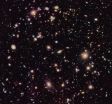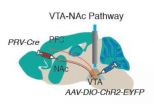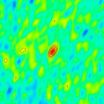(Press-News.org) SEATTLE – Younger women who wait at least 15 years after their first menstrual period to give birth to their first child may reduce their risk of an aggressive form of breast cancer by up to 60 percent, according to a Fred Hutchinson Cancer Research Center study. The findings, by Christopher I. Li, M.D., Ph.D., a member of the Public Health Sciences Division at Fred Hutch, are published online in Breast Cancer Research and Treatment.
"We found that the interval between menarche and age at first live birth is inversely associated with the risk of triple-negative breast cancer," Li said. While relatively uncommon, triple-negative breast cancer is a particularly aggressive subtype of the disease that does not depend on hormones such as estrogen to grow and spread. This type of cancer, which accounts for only 10 percent to 20 percent of all breast cancers, does not express the genes for estrogen receptor (ER), progesterone receptor (PR) or HER2/neu and therefore does not respond to hormone-blocking drugs such as Tamoxifen.
The study by Li and colleagues in the Public Health Sciences and Human Biology divisions at Fred Hutch is the first to look at how the interval between first menstrual period and age at first birth is related to the risk of this particular type of breast cancer. It is also the first study to look at the relationship between reproductive factors and breast cancer risk among premenopausal women, who have a higher risk of triple-negative and HER2-overexpressing breast cancer than postmenopausal women.
The study also confirmed several previous studies that have suggested that breast-feeding confers a protective effect against triple-negative disease. "Breast-feeding is emerging as a potentially strong protective factor against one of the most aggressive forms of breast cancer," Li said.
The mechanism by which breast-feeding and delaying childbirth reduces the risk of this form of breast cancer is unclear, Li said.
Previous research has shown, however, that the risk of the most common subtype of breast cancer, ER positive, is decreased among women who've had a full-term pregnancy and have breast-fed. The reason for this, researchers believe, is that the hormones of pregnancy induce certain changes in the cellular structure of the breast that seem to make the tissue less susceptible to this type of cancer.
The study has particular implications for African-American women, who experience disproportionately high rates of triple-negative disease. While the reason for this remains largely unknown, on a population level reproductive characteristics are known to vary by race, and compared to non-Hispanic white women, African-American women are more likely to start having children at a younger age and are less likely to breast-feed, Li said.
"Our observations that delayed childbearing and breast-feeding are protective against triple-negative breast cancer suggest that variations in reproductive histories by race may to some extent explain the higher rates of triple-negative disease in African-American women," Li said.
The study involved more than 1,960 Seattle-area women between the ages of 20 and 44, 1,021 with a history of breast cancer and 941 without. Reproductive histories among women without a history of breast cancer were compared to those of women with ER-positive (781), triple-negative (180) and HER2-overexpressing (60) breast cancer.
"This is an observational study and also one of the first to focus on premenopausal breast cancer and so our results require confirmation and thus should be interpreted with some caution," Li said.
INFORMATION:
The National Cancer Institute and the Department of Defense Breast Cancer Research Program funded the study.
Editor's note: To obtain a copy of the Breast Cancer Research and Treatment paper, "Reproductive factors and risk of estrogen receptor positive, triple-negative, and HER2-neu overexpressing breast cancer among women 20-44 years of age," visit http://www.springerlink.com/openurl.asp?genre=article&id=doi:10.1007/s10549-012-2365-1
At Fred Hutchinson Cancer Research Center, home to three Nobel laureates, interdisciplinary teams of world-renowned scientists seek new and innovative ways to prevent, diagnose and treat cancer, HIV/AIDS and other life-threatening diseases. Fred Hutch's pioneering work in bone marrow transplantation led to the development of immunotherapy, which harnesses the power of the immune system to treat cancer with minimal side effects. An independent, nonprofit research institute based in Seattle, Fred Hutch houses the nation's first and largest cancer prevention research program, as well as the clinical coordinating center of the Women's Health Initiative and the international headquarters of the HIV Vaccine Trials Network. Private contributions are essential for enabling Fred Hutch scientists to explore novel research opportunities that lead to important medical breakthroughs. For more information visit www.fhcrc.org or follow Fred Hutch on Facebook, Twitter or YouTube.
END
Astronomers using the NASA/ESA Hubble Space Telescope have uncovered seven primitive galaxies from a distant population that formed more than 13 billion years ago. In the process, their observations have put forward a candidate for the record for the most distant galaxy found to date (at redshift 11.9), and have shed new light on the earliest years of cosmic history. The galaxies are seen as they were when the Universe was less than 4 percent of its present age.
A team of scientists using the Hubble Space Telescope has made new observations of the Hubble Ultra Deep Field ...
Research by University of Notre Dame biochemist Anthony S. Serianni is providing new insights that could have important implications for understanding and treating diabetes.
Serianni points out that biological compounds known as dicarbonyl sugars are produced inside the human body from the natural breakdown of the simple sugar, glucose. The formation of these sugars is enhanced in diabetic patients because glucose concentrations in the blood and plasma of diabetics are significantly elevated.
"We investigated, under laboratory conditions that approximate those in the ...
Some people like to have a few close friends, while others prefer a wider social circle that is perhaps less deep. These preferences reflect people's personalities and individual circumstances — but is one approach to social networks "better" than the other? New research suggests that the optimal social networking strategy depends on socioeconomic conditions.
Researchers Shigehiro Oishi of the University of Virginia and Selin Kesebir of the London Business School explore the benefits of social networking strategies in two studies published in Psychological Science, a ...
PASADENA, Calif.—A team of astronomers led by the California Institute of Technology (Caltech) has used NASA's Hubble Space Telescope to discover seven of the most primitive and distant galaxies ever seen.
One of the galaxies, the astronomers say, might be the all-time record holder—the galaxy as observed existed when the universe was merely 380 million years old. All of the newly discovered galaxies formed more than 13 billion years ago, when the universe was just about 4 percent of its present age, a period astronomers call the "cosmic dawn," when the first galaxies ...
WASHINGTON -- Using NASA's Hubble Space Telescope, astronomers have uncovered a previously unseen population of seven primitive galaxies that formed more than 13 billion years ago, when the universe was less than 4 percent of its present age. The deepest images to date from Hubble yield the first statistically robust sample of galaxies that tells how abundant they were close to the era when galaxies first formed.
The results are from an ambitious Hubble survey of an intensively studied patch of sky known as the Ultra Deep Field (UDF). In the 2012 campaign, called UDF12, ...
As one of the top 10 barley producers in the world, Canada faces a problem of adapting to the 'new normal' of a warmer, drier climate.
The 2012 growing season was considered an average year on the Canadian Prairies, "but we still had a summer water deficit, and it is that type of condition we are trying to work with," said Scott Chang, a professor of soil science in the University of Alberta's Department of Renewable Resources in Edmonton, Canada.
Chang teamed with fellow crop scientist Anthony Anyia of Alberta Innovates – Technology Futures in 2006, following a severe ...
A new study by biologists at Mercyhurst University focuses on the influence of climate change, particularly warmer winters, on the survival and potential fecundity of cold-blooded animals.
Cold blooded animals, or ectotherms, do not have an internal mechanism for regulating body temperature. Instead, they rely on solar energy captured by the environment.
The purpose of the Mercyhurst study, a collaboration of Michael Elnitsky, Ph.D., assistant professor of biology; and students Drew Spacht and Seth Pezar, is to assess the current and future impacts of climate change ...
A specific pattern of neuronal firing in a brain reward circuit instantly rendered mice vulnerable to depression-like behavior induced by acute severe stress, a study supported by the National Institutes of Health has found. When researchers used a high-tech method to mimic the pattern, previously resilient mice instantly succumbed to a depression-like syndrome of social withdrawal and reduced pleasure-seeking – they avoided other animals and lost their sweet tooth. When the firing pattern was inhibited in vulnerable mice, they instantly became resilient.
"For the first ...
Back in January, a new X-ray source flared and rapidly brightened in the Andromeda galaxy (M31), located 2.5 million light-years away. Classified as an ultraluminous X-ray source (ULX), the object is only the second ever seen in M31 and became the target of an intense observing campaign by orbiting X-ray telescopes -- including NASA's Swift -- and radio observatories on the ground. These efforts resulted in the first detection of radio-emitting jets from a stellar-mass black hole outside our own galaxy.
A ULX is thought to be a binary system containing a black hole that ...
Researchers at Michigan State University have discovered a protein that does its best work with one foot in the grave.
The study, which appears in the current issue of the Journal of Biological Chemistry, focuses on the nontraditional lifestyle of Retinoblastoma tumor suppressor proteins, which could lead to new ways to treat cancer.
"Retinoblastoma proteins are unique in that they use controlled destruction to do their jobs in a timely but restrained fashion," said Liang Zhang, a lead author and MSU cell and molecular biology graduate student. "This is an unusual way ...





